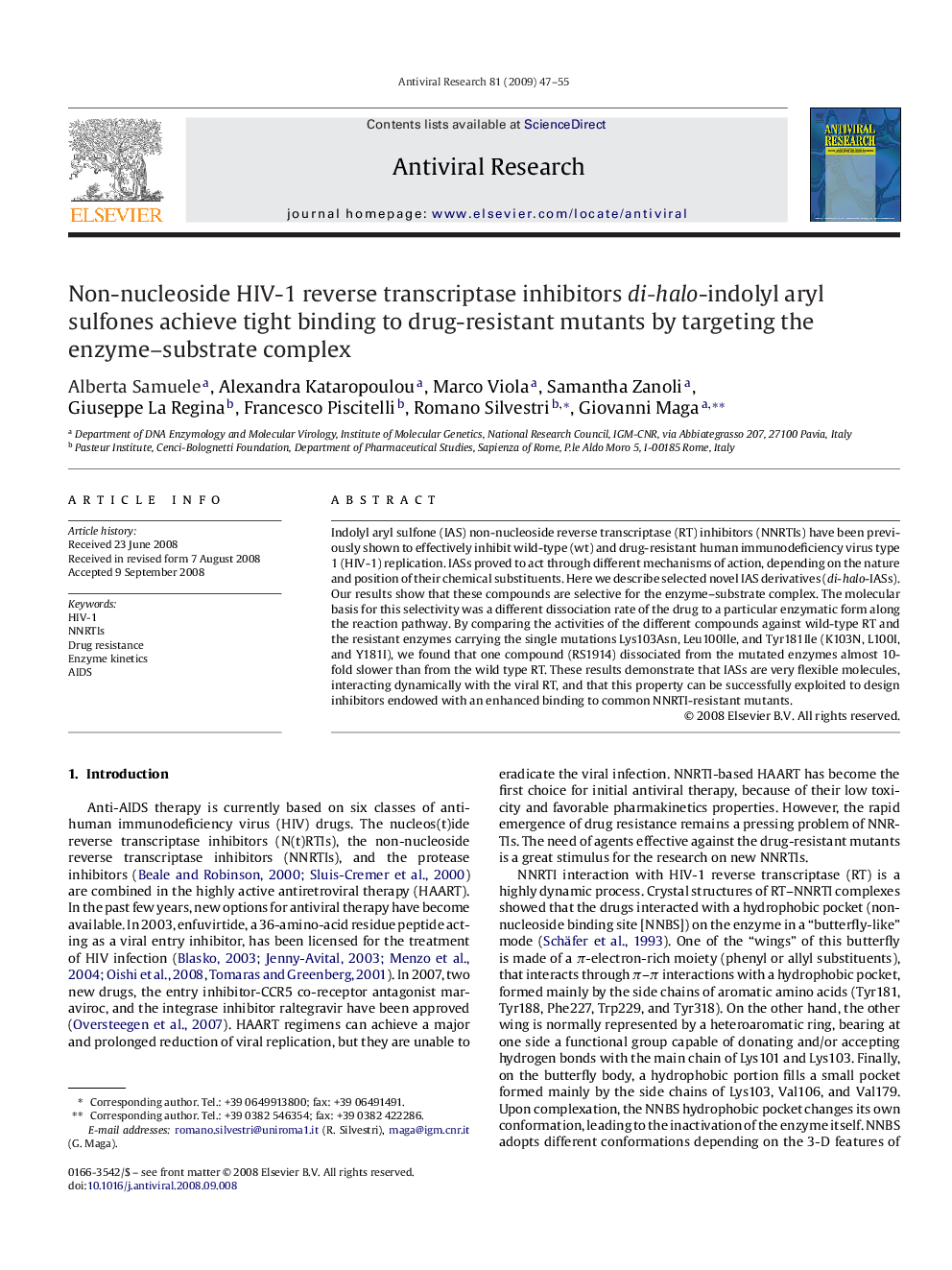| Article ID | Journal | Published Year | Pages | File Type |
|---|---|---|---|---|
| 2510983 | Antiviral Research | 2009 | 9 Pages |
Indolyl aryl sulfone (IAS) non-nucleoside reverse transcriptase (RT) inhibitors (NNRTIs) have been previously shown to effectively inhibit wild-type (wt) and drug-resistant human immunodeficiency virus type 1 (HIV-1) replication. IASs proved to act through different mechanisms of action, depending on the nature and position of their chemical substituents. Here we describe selected novel IAS derivatives (di-halo-IASs). Our results show that these compounds are selective for the enzyme–substrate complex. The molecular basis for this selectivity was a different dissociation rate of the drug to a particular enzymatic form along the reaction pathway. By comparing the activities of the different compounds against wild-type RT and the resistant enzymes carrying the single mutations Lys103Asn, Leu100Ile, and Tyr181Ile (K103N, L100I, and Y181I), we found that one compound (RS1914) dissociated from the mutated enzymes almost 10-fold slower than from the wild type RT. These results demonstrate that IASs are very flexible molecules, interacting dynamically with the viral RT, and that this property can be successfully exploited to design inhibitors endowed with an enhanced binding to common NNRTI-resistant mutants.
